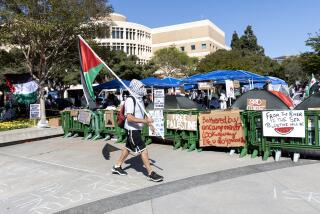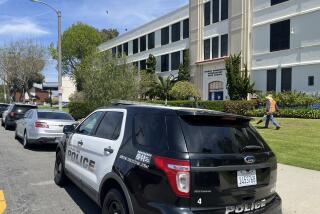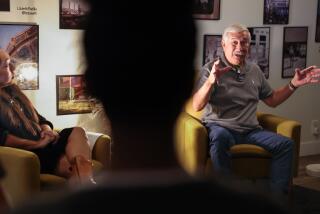WESTMINSTER : Gang Youths Teach Their Peers a Lesson
Generally speaking, high schools don’t invite convicted criminals onto their campuses. But that’s exactly what La Quinta High in Westminster did Wednesday.
Four former juvenile offenders from different ethnic gangs in Southern California, were on campus as a part of a “Symposium on Ethnic Understanding” sponsored by Youth Leadership for Action. The four are all serving sentences at California Youth Authority facilities.
Additionally, speakers from different Southern California agencies visited classes and spoke to students on everything from gang violence to Islamic culture.
“We’re trying to create understanding of the different cultures (among) the students,” said Peggy Hai, a 17-year-old senior member of Youth Leadership for Action.
The student seminars posed solutions for a city that is no stranger to cultural tension. It was the scene of a cross-burning in front of a home owned by a black family, and a Jewish temple and a Korean-owned store have been defaced by graffiti.
The former gang members, now serving sentences at the Oak Glen Youth Conservation Camp in Yucaipa, dropped their racial gang identification and came together in a third-period English class to tell students about the dangers of drugs and alcohol.
“For one night of partying, I’m spending three years of my life in jail,” said Robert Ramirez, 20, a former gang member. Ramirez told the class that everyone he knows who is involved in drugs “is going to end up dead, in jail or going insane.”
Michael Gilbo, 20, and Eric Savador Hill, 21, stood side by side as they talked of their days in well-known rival black gangs.
Gilbo advised students to resist the temptation of drugs. “Just be yourself,” he said. He told them to stand firm against the pressure of their friends or “the crowd” to take drugs “because the crowd is going to bring you down.”
In a science classroom on the other side of campus, Megan Swezey of the Constitutional Rights Foundation opened up the classroom “to really talk about prejudice.”
Swezey dismissed the notion of Southern California as an ethnic melting pot, where all cultures are assimilated into one, and spoke instead of a “cultural mosaic” in which the community shares some American culture, but ethnic heritage is preserved.
More to Read
Sign up for Essential California
The most important California stories and recommendations in your inbox every morning.
You may occasionally receive promotional content from the Los Angeles Times.










